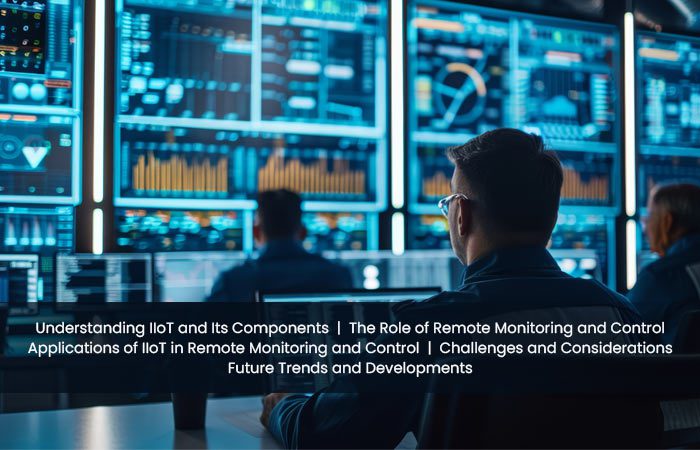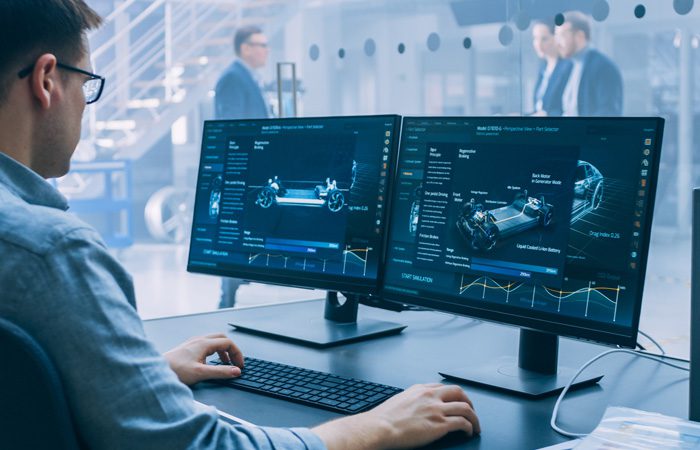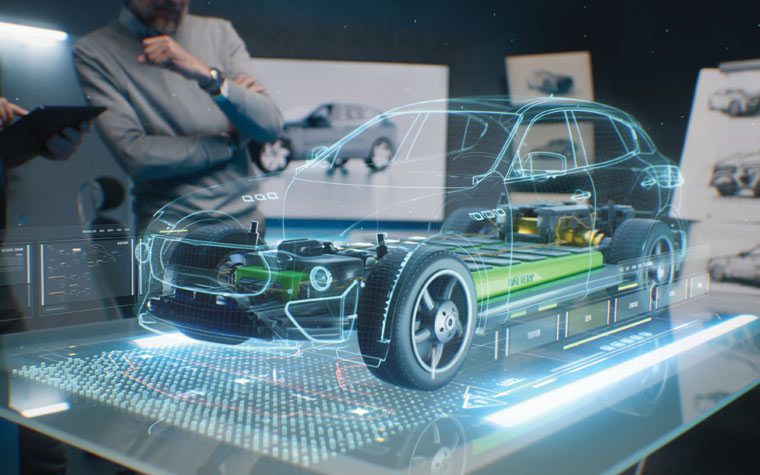
Exploring the Potential of IIoT in Remote Monitoring and Control
The Industrial Internet of Things (IIoT) is transforming industries worldwide by enabling smarter, more efficient operations through enhanced connectivity and data-driven insights. One of the most promising applications of IIoT is in remote monitoring and control, which allows businesses to oversee and manage their operations from virtually anywhere.
This capability is revolutionizing sectors such as manufacturing, oil and gas, utilities, and agriculture, among others, by providing unprecedented levels of visibility and control over industrial processes.
Understanding IIoT and Its Components
IIoT refers to the network of interconnected devices and systems used in industrial environments to collect, exchange, and analyze data. These devices include sensors, actuators, and other smart equipment that gather real-time information from industrial assets. The data collected is then transmitted to a central system where it is analyzed and used to make informed decisions.
The core components of IIoT systems include:
- Sensors and Actuators: These devices collect data from industrial equipment and processes, such as temperature, pressure, and vibration levels.
- Connectivity: Reliable and secure communication networks, including wireless and wired options, enable data transmission between devices and central systems.
- Data Analytics: Advanced analytics tools process and analyze the data to extract valuable insights.
- Cloud Computing: Cloud platforms provide scalable storage and computing resources to handle the vast amounts of data generated by IIoT devices.
- User Interfaces: Dashboards and other interfaces allow users to monitor and control industrial processes remotely.
The Role of Remote Monitoring and Control
Remote monitoring and control involve overseeing and managing industrial processes from a distance using IIoT technologies. This capability is particularly valuable for industries with geographically dispersed operations or those requiring constant supervision to ensure efficiency and safety. By leveraging IIoT, businesses can achieve several key benefits:
- Enhanced Operational Efficiency: Remote monitoring enables real-time visibility into industrial processes, allowing for quicker identification and resolution of issues. This leads to reduced downtime and increased productivity.
- Predictive Maintenance: IIoT sensors can detect anomalies and predict equipment failures before they occur, enabling proactive maintenance. This reduces unexpected breakdowns and extends the lifespan of assets.
- Cost Savings: By optimizing operations and reducing downtime, businesses can achieve significant cost savings. Additionally, remote monitoring minimizes the need for on-site personnel, further reducing expenses.
- Improved Safety: Remote monitoring helps identify hazardous conditions and enables prompt intervention, enhancing worker safety and reducing the risk of accidents.
- Sustainability: IIoT-driven insights can help optimize resource usage, reduce waste, and minimize the environmental impact of industrial operations.
Applications of IIoT in Remote Monitoring and Control
- Manufacturing
In manufacturing, IIoT enables remote monitoring of production lines, equipment performance, and environmental conditions. For example, sensors can track the temperature and humidity levels in a factory to ensure optimal conditions for production.
If deviations are detected, alerts can be sent to operators, who can then adjust the settings remotely to maintain product quality. Additionally, IIoT systems can monitor machine health, predicting when maintenance is needed to prevent costly breakdowns.
- Oil and Gas
The oil and gas industry relies heavily on remote monitoring due to the vast and often remote locations of its operations. IIoT solutions can monitor pipeline integrity, detect leaks, and track the performance of drilling equipment. This not only enhances safety but also ensures efficient resource extraction.
For instance, by monitoring pressure and flow rates in real-time, operators can optimize drilling processes and reduce the risk of blowouts.
- Utilities
Utilities, such as electricity, water, and gas providers, use IIoT for remote monitoring of their infrastructure. Smart meters and sensors can track usage patterns, detect faults, and monitor the health of critical assets like transformers and substations. This allows utility companies to respond quickly to outages, improve service reliability, and optimize resource distribution.
Moreover, IIoT can support demand response programs by enabling remote control of consumer devices during peak usage periods.
- Agriculture
In agriculture, IIoT facilitates precision farming by enabling remote monitoring of soil conditions, weather patterns, and crop health. Farmers can use this data to make informed decisions about irrigation, fertilization, and pest control, leading to higher yields and reduced resource consumption.
For example, soil moisture sensors can trigger irrigation systems only when needed, conserving water and ensuring optimal crop growth.
Challenges and Considerations
While the potential of IIoT in remote monitoring and control is immense, several challenges must be addressed to fully realize its benefits:
- Data Security and Privacy: Protecting sensitive data from cyber threats is paramount. Robust security measures, including encryption, authentication, and access controls, are essential to safeguard IIoT systems.
- Interoperability: IIoT solutions often involve integrating diverse devices and systems. Ensuring interoperability and seamless communication between different components is crucial for effective remote monitoring and control.
- Scalability: As the number of connected devices grows, the ability to scale IIoT systems to handle increased data volumes and processing demands becomes vital.
- Reliability: Dependable connectivity and robust hardware are necessary to ensure continuous monitoring and control, especially in remote or harsh environments.
- Cost and Investment: Implementing IIoT solutions requires significant upfront investment in hardware, software, and infrastructure. Businesses must carefully assess the return on investment and long-term benefits.
Future Trends and Developments
The future of IIoT in remote monitoring and control looks promising, with several trends and developments poised to drive further advancements:
- Edge Computing: By processing data closer to the source, edge computing reduces latency and bandwidth requirements, enabling faster and more efficient remote monitoring and control.
- Artificial Intelligence and Machine Learning: AI and ML algorithms can analyze vast amounts of data to identify patterns, predict outcomes, and automate decision-making processes. This enhances the effectiveness of IIoT systems in remote monitoring and control.
- 5G Connectivity: The rollout of 5G networks will provide faster and more reliable communication, supporting real-time remote monitoring and control applications.
- Digital Twins: Digital twins are virtual replicas of physical assets that can be used for simulation, monitoring, and predictive maintenance. They offer a powerful tool for remote monitoring and control, allowing operators to visualize and interact with their assets in real-time.
The potential of IIoT in remote monitoring and control is vast, offering significant benefits across various industries. By providing real-time visibility, predictive insights, and enhanced control over industrial processes, IIoT is driving operational efficiency, cost savings, and improved safety.
However, businesses must navigate challenges related to security, interoperability, scalability, and investment to fully leverage the power of IIoT. As technology continues to evolve, the future of remote monitoring and control looks brighter than ever, promising even greater advancements and opportunities for innovation.


